I have a shoe fetish. But not like other women have a shoe fetish. Not like Carrie Bradshaw had a shoe fetish. Not like I used to have a shoe fetish. Now that I have a sitting disability, shoes are less of a fashion statement, and more of a medical device.
These days, I flatter myself by saying my obsession is perfectly practical. I am crazy about shoe comfort. I could care less about the style or brand. But I am really into arch support, shock absorption, water resistance, and decent treads.
Coronavirus Reopening Priority #1: New Walking Shoes
Yesterday, June 15th, New Jersey entered its second phase of coronavirus reopening. For the first time in months, non-essential retail stores were allowed to open. And so, as soon as I was awake enough to go anywhere, I donned my mask, and trekked to a nearby DSW to find a proper pair of walking shoes.
I came out, quite satisfied, with these beauties:
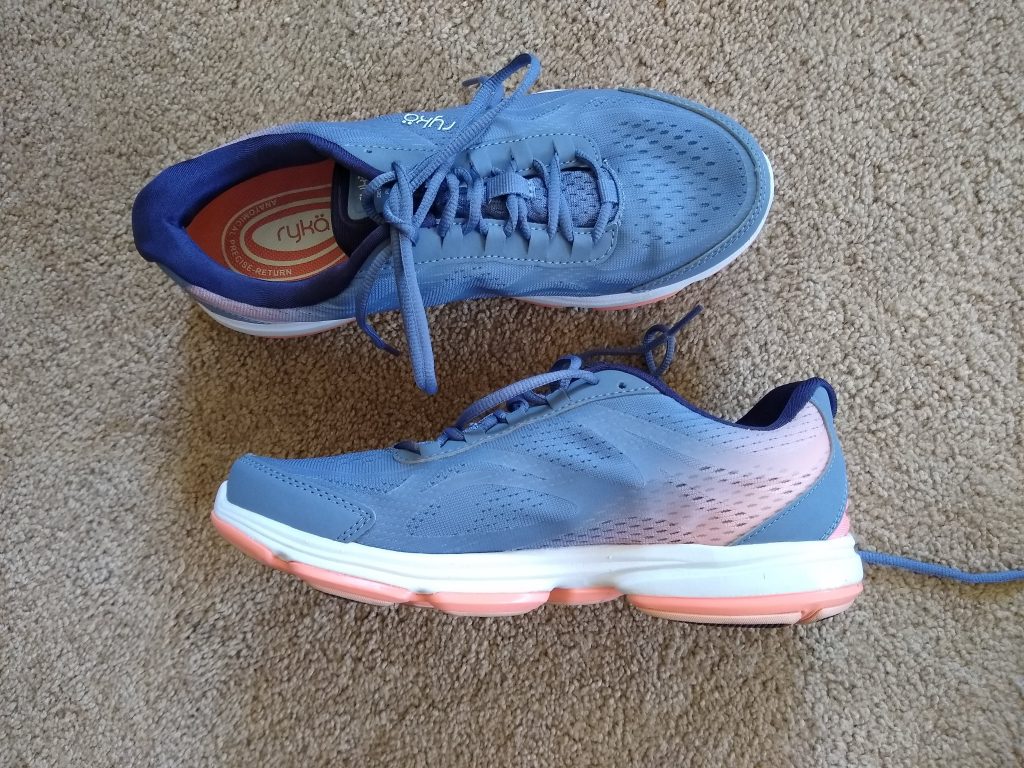
Shoe purchases run the gamut from frivolous to necessary. This one was pushing pretty far into the necessary range. Before the coronavirus shutdown in March, my walking shoes were already disintegrating. Since I usually walk 2-3 hours a day, they were becoming less and less shoe-like. I started getting serious knee pain during my walks, which carried over into the rest of my days.
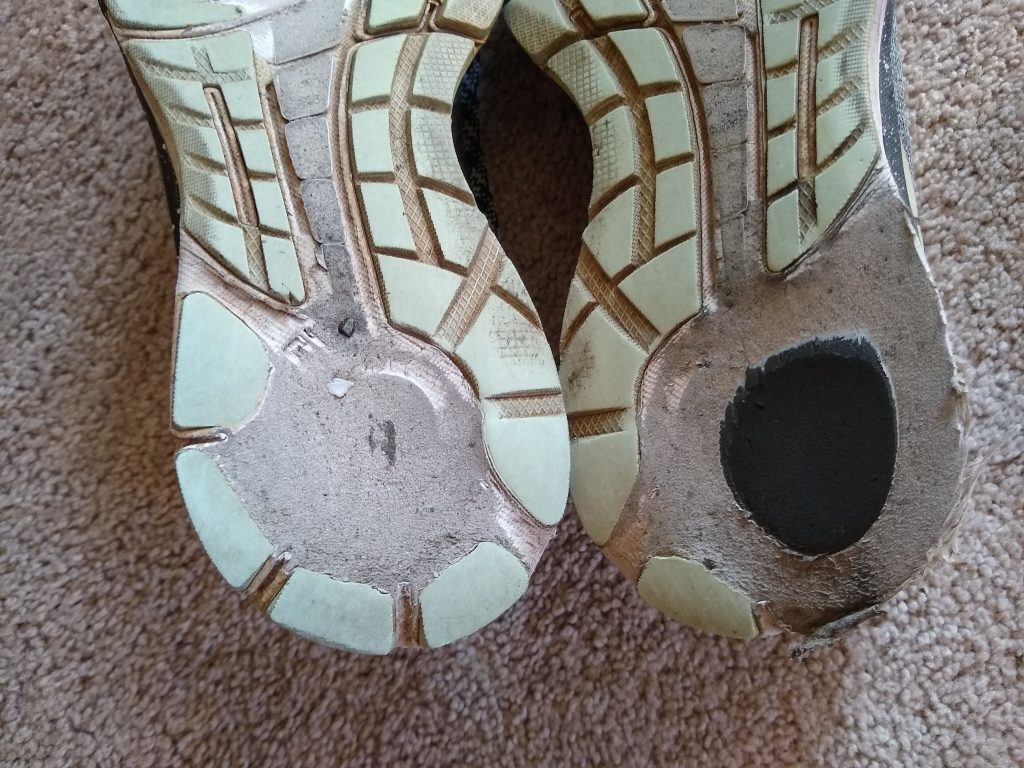
Since the heels were shot, I developed an almost-tiptoe way of walking. Instead of landing on my heel with each step, I landed on the ball of my foot. This solved one problem, but created others. The tendons and bones in my knees seemed to wriggle out of place. I had the unsettling feeling that my joints were likely to fall apart without notice, the way a child’s block tower might come crashing down with a bump.
I brought myself a slight reprieve by switching to an even older pair of worn-out shoes. Had I not come from a farm family, they would have ended up in the trash heap years ago. But I had internalized the idea that your last worn-out shoes are now your farm shoes, so I always keep at least one retired pair in reserve.
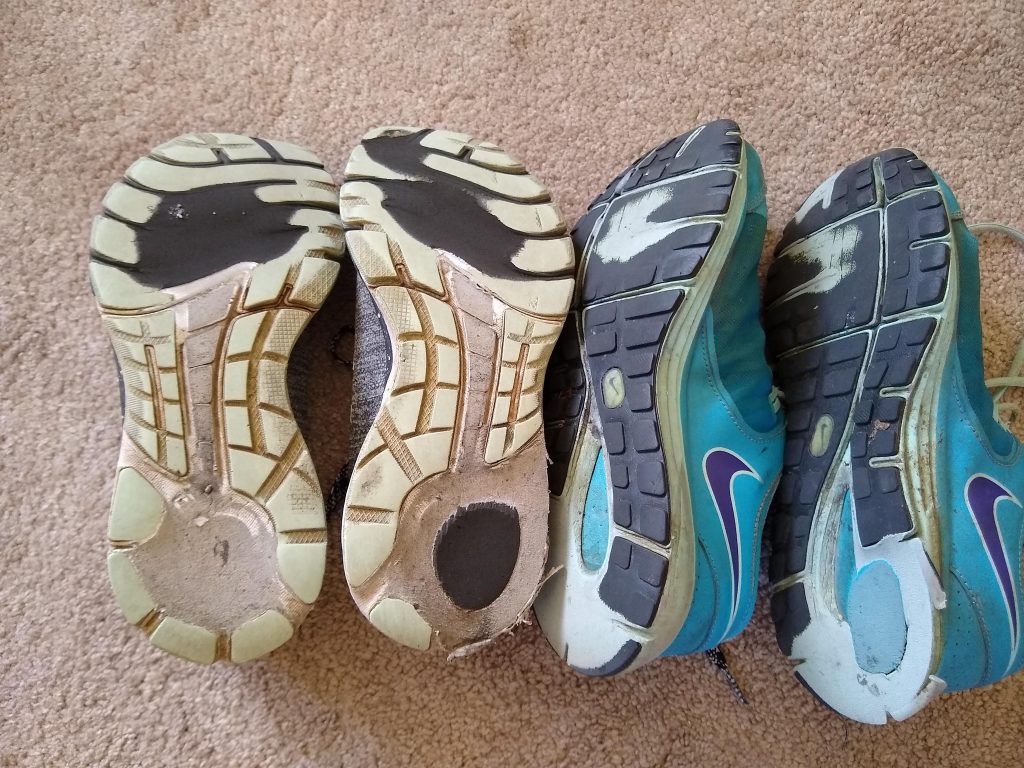
The night I got my new shoes, I went for a nice long walk. Signs were positive, and my knees did not protest. Then again, it would truly be a marvel of engineering if my new shoes managed to be worse than the old ones.
A Shoe for Every Occasion
Even before my sitting disability, the only place I routinely went without shoes was my bed. True, shoes were usually more comfortable than the hardwood and vinyl floors in my string of new adult apartments. But I also have a princess-and-the-pea-level aversion to stepping on crumbs or grit.
Years ago, I bought a pair of Crocs sandals that are so well-used that they now feel more natural to me than my own bare feet.
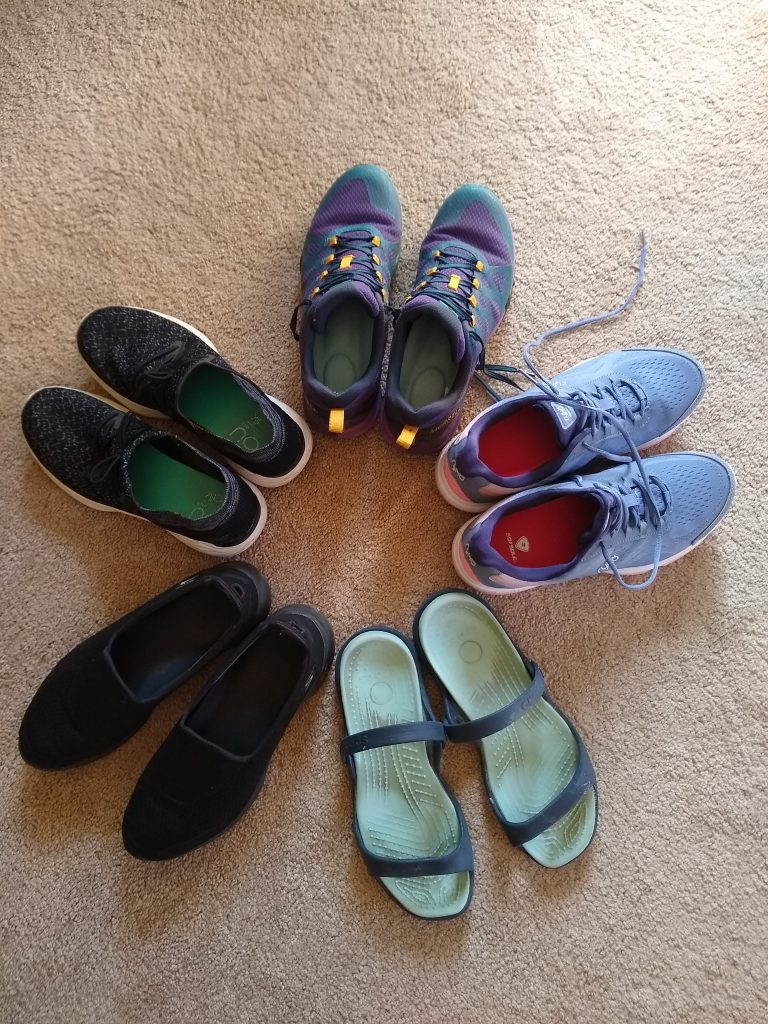
My walking shoes are, of course, a necessity. But I also have a separate (waterproof!) pair of hiking shoes that I wear on rough terrain or when it’s raining. Unfortunately, they are not as shock-absorbent as actually walking or running shoes, and they will also cause my knees to hurt if I try to use them for everyday purposes. They also cost a mint, so perhaps it’s best that I save them for when they’re truly needed.
In 2018, I got on the Sketch-Air bandwagon and bought myself a rather fashionable pair of black shoes. During the inaugural trip to the gym, my Sketchers made me feel like I was walking on a cloud. But after a few days, I crushed the memory foam underfoot, and realized there was nothing particularly supportive about them. I was angry that I’d wasted $50, but I soon found a niche for them to fill. They became my standing shoes, and my first choice for work.
Rounding out my everyday shoe collection is an oversized pair of walking shoes that my Mom saved from the garbage by passing them on to me. It turned out to be an excellent deal for both us of. My Mom’s feet are about a size larger than mine. During my edema flareups in 2018 and 2019, these were the only shoes I could force my swollen feet into, so I wore them everywhere. I knocked off the garden dirt as best I could before wearing them into the office. Now that I have normal-sized feet again, I mainly wear them for taking out the garbage or working in the garden.
On the rare occasions when nice shoes are a must, I have a comparatively sensible selection to choose from.
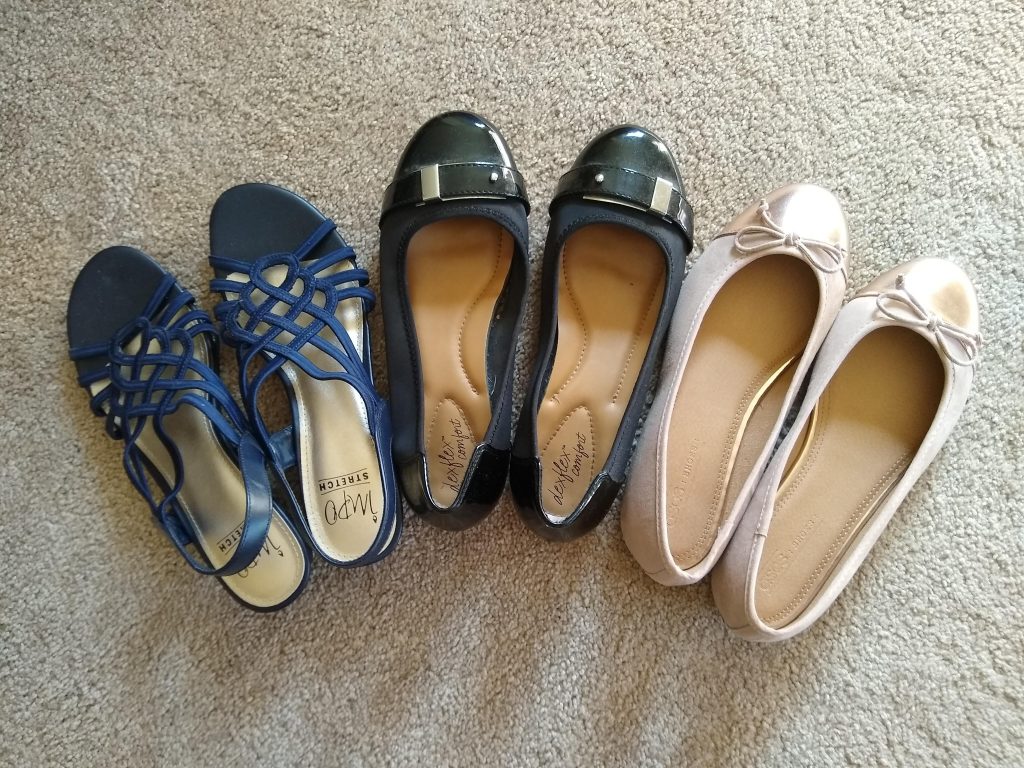
Leaving Room for Extras
Aside from the occasional swelling, my feet haven’t gotten any bigger over the last few years. But my shoes have. It has gradually dawned on me that there are many things I might want to put inside my shoes besides my feet. (And when my edema does flare up, getting my feet in anything is a challenge.)
I’m as crazy about socks as I am about shoes. In the winter, I often wear two pairs of socks, including one pair of fuzzy monstrosities that are best described as, “warm.” In the summer, I switch to knee-high compression socks. They take up more room in my sock drawer, but less room in my shoes. Which is good, because I also need to stick a pair of insoles in there.
As little as three years ago, I was barely aware that insoles were products you could buy. Then it occurred to me that they were a great, and relatively inexpensive, way to make good shoes perfectly comfortable. Since then, my collection has slowly expanded, like a single mint plant that gradually colonizes the entire garden.

My favorites so far are actually these cheap, generic things I bought off Amazon. They are the only pair where high arch seems to mean high arch (though I would not be unhappy if the difference was even more pronounced).
Before My Sitting Disability
I’ve written before about how the encroachment of a sitting disability made me boring. This anti-drama can be seen playing out in my choice of footwear.
Before my sitting disability, my favorite shoes looked like this:
In case you are wondering, no, I never could walk very well in them. I decided early on that barefoot pole dancing was more my style. Still, why would I own these shoes if I didn’t love them?
Before the advent of my sitting disability, I was all about the heels. I wore high heels to work nearly every day. They were my style of choice for any event with an implicit expectation that I make myself presentable. I claimed comfort as my reason. I have high arches, and wearing heels spared me from walking on the sides of my feet, as if my ankles didn’t understand how to stand up straight.
Once it was clear that my back problems were not going away, and I would be on my feet a lot for the foreseeable future, I migrated to more sensible footwear. Several rounds of culling reduced my once-sizeable heel collection to a few pairs. I still have my pre-sciatica favorite boots, since I can’t bear to part with them.
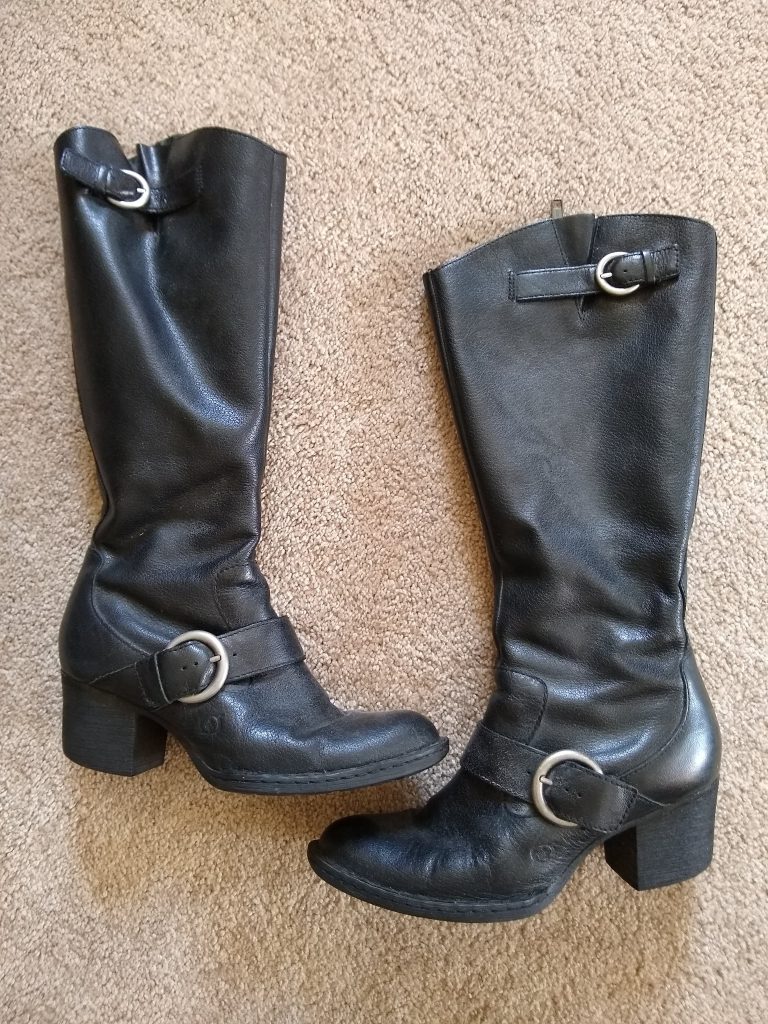
Like my pole heels, I can’t imagine when I will wear them again. Even if my back condition magically clears up and goes away, I doubt I would have the courage to wear anything that might damage my spine further. In a perverse echo of Marie Kondo philosophy, I keep them anyway, because they once sparked joy.
These days, I only own one pair of heels that I consider suitable for normal use, and I only pull them out for events that require a nice dress. They are eminently sensible, and well-cushioned.
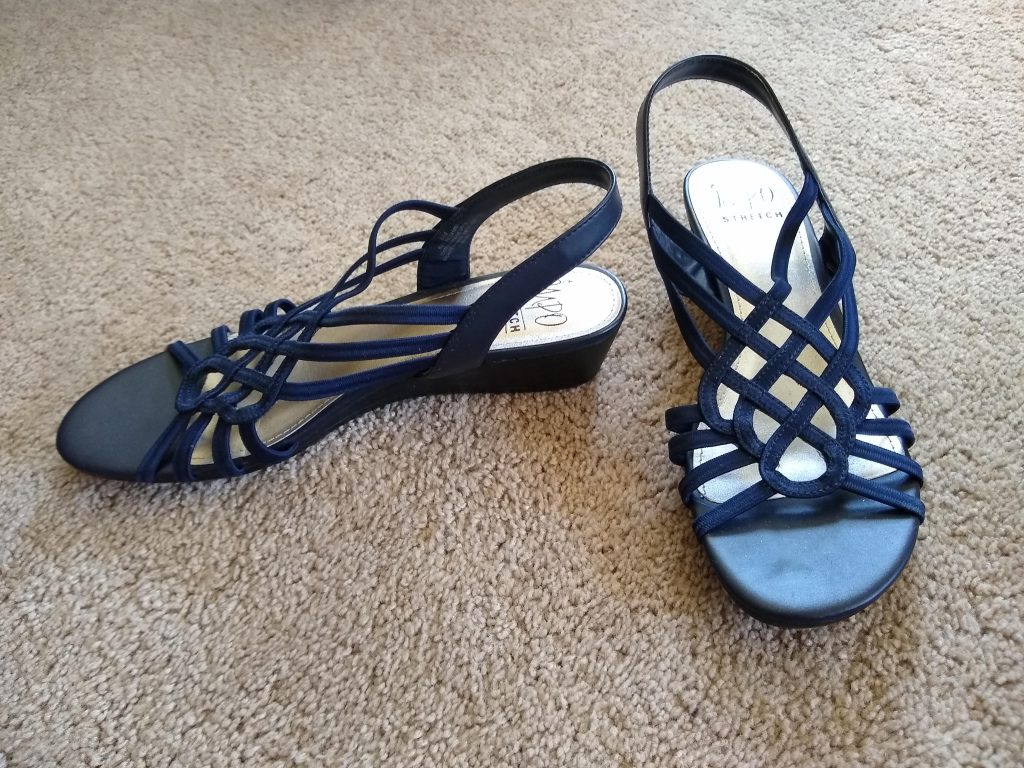
With all this talk of shoes, I feel inspired to also write articles about ships, and sealing wax. Or perhaps, cabbages and kings. It may take me some time to find a proper connection to sitting disabilities.
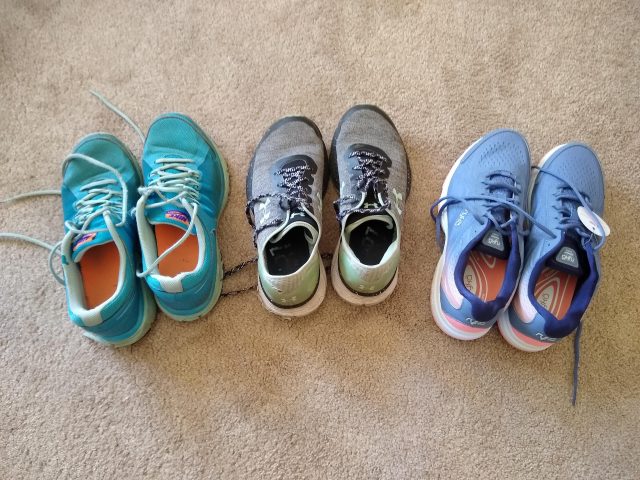

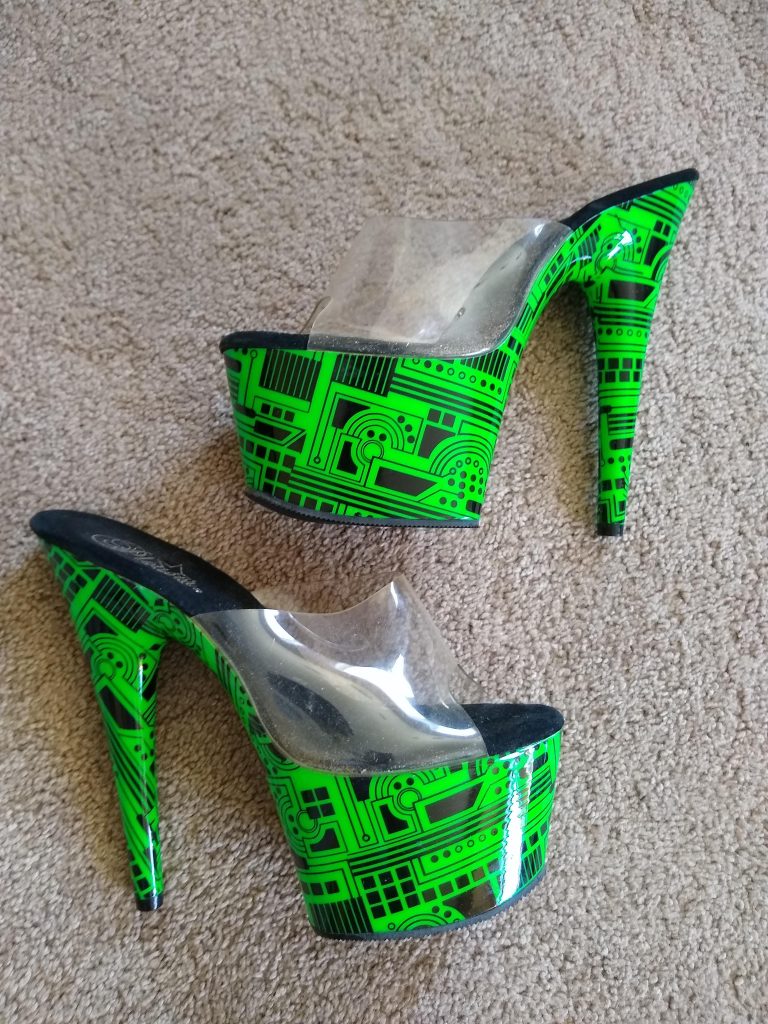
shoes..
socks..